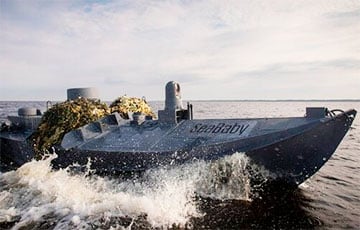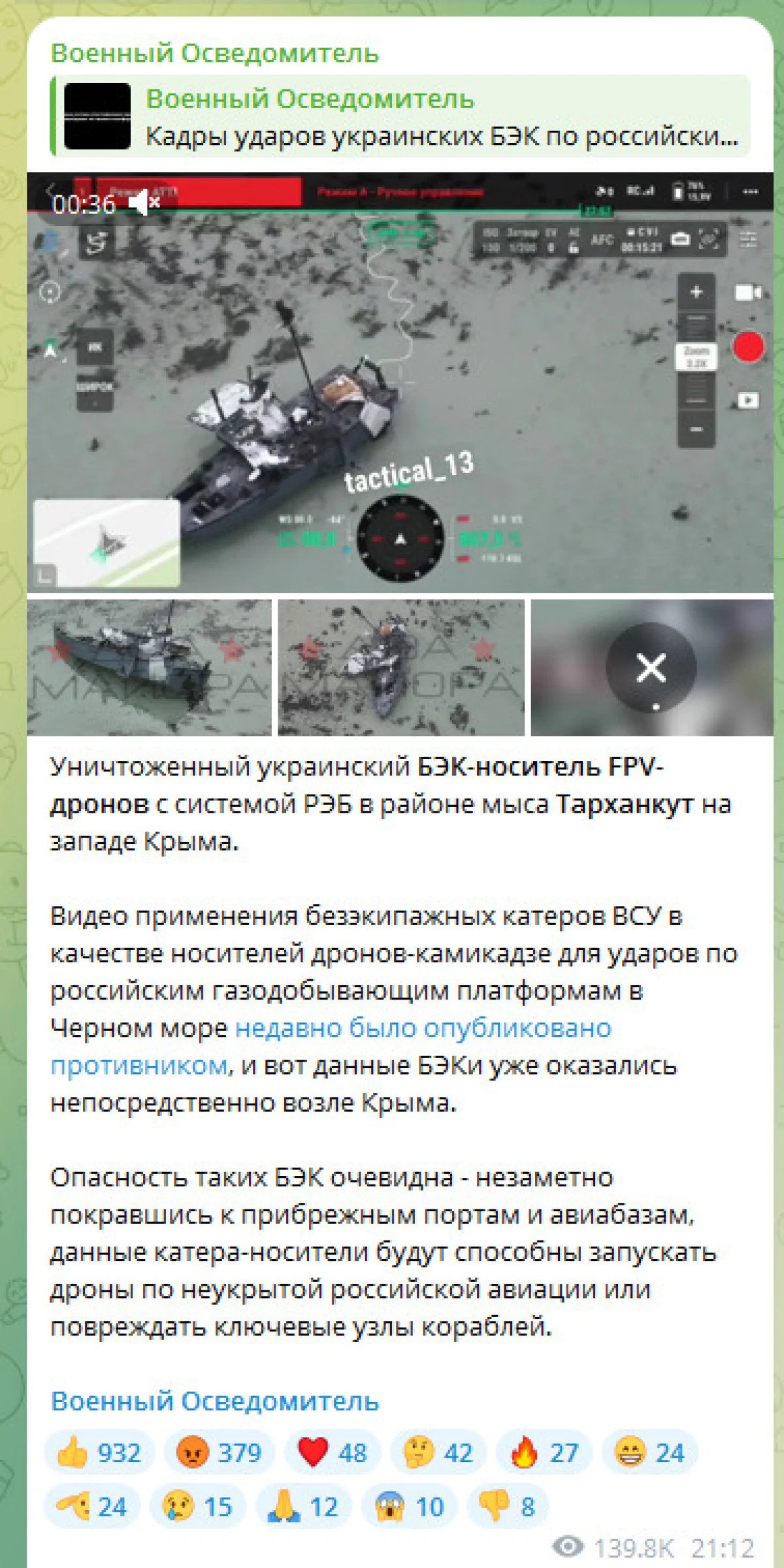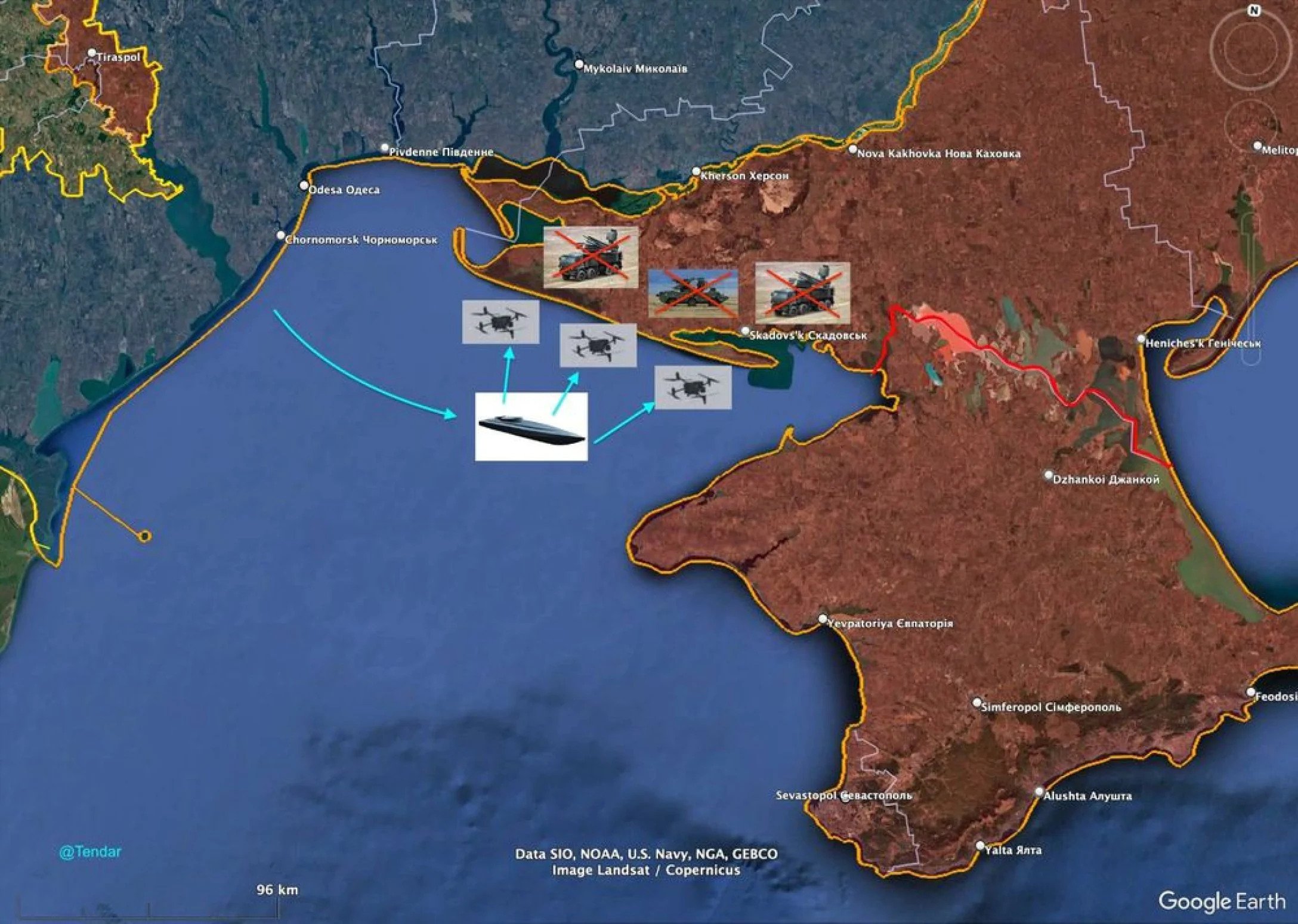Ukrainian Drone Boats Are Now Launching Kamikaze FPV Drones At Russian Shore Targets
1- 8.01.2025, 12:43
- 3,750

This is the latest development in Ukraine’s Black Sea campaign.
Ukraine says it has destroyed three Russian air defense systems in some of the first successful FPV drone strikes launched from drone boats at sea. This is the latest development in Ukraine’s Black Sea drone war, writes The War Zone.
The latest strikes were said to have been carried out by the Ukrainian Navy, which published a video of one of the attacks against a Pantsir-S1 short-range air defense system (SHORADS). The extent of the damage to the vehicle is not immediately clear, based on this footage. While not independently verified, Russian military bloggers have also stated that Ukraine is now using USVs to launch FPV drones in attacks on targets close to the Black Sea coast.
Another 'no-analogue' scrap metal.
— Defense of Ukraine (@DefenceU) January 6, 2025
Ukrainian drones destroyed a Pantsir-S1 air defense system in the Kherson region.
📹: UA Navy pic.twitter.com/Nr01VCzumZ

Ukraine’s Center for Strategic Communication and Information Security (CSCIS), a government-run media organization, today released more details of the strikes, which it describes as the first of this kind.
“Only a week after Ukrainian sea drones made history by successfully taking down Russian helicopters, another historical first as our homegrown naval drones are now launching their own FPV drones, destroying Russia’s air defense units,” CSCIS said on social media.
The type of FPV drones used in the strike, as well as the type of USV from which they were launched, have not been disclosed, although an infographic released by CSCIS shows a drone boat that looks broadly similar to the widely used Magura V5, as well as three quadcopter FPV drones.

After being brought closer to their targets using the USV, the FPV drones were launched against two Russian Pantsir-S1 systems and one Osa system. All three SHORADS vehicles were located in Russian-occupied areas of Ukraine’s southern Kherson region.
The Pantsir-S1 (known in the West as the SA-22 Greyhound) — which you can read more about here — is one of Russia’s latest SHORADS, while the Osa (SA-8 Gecko) is a Cold War-era system, also used by Ukraine. Both are based on a wheeled high-mobility chassis.
According to The Kyiv Independent, a single Pantsir-S1 system has a price tag of around $15 million.
According to the journalists, back in December, the first evidence emerged that Ukraine was using a capability like this, with aerial drones being launched from USVs as part of its campaign of attacks on Russian offshore platforms. Yesterday’s strikes appear to be the first time that targets on land have been engaged in this way.
It’s also noteworthy that Ukraine last week used Magura V5 drone boats armed with repurposed R-73 heat-seeking air-to-air missiles to bring down two Russian Mi-8 helicopters and damage another, off the coast of Crimea.
The journalists believe that, in a naval context, the ability of Ukrainian USVs to strike targets on land is a significant one. Previously, drone boats had very limited options for striking targets on land. As well as the kamikaze-type of USVs that have taken a steady toll on Russian shipping, Ukraine has fielded drone boats armed with unguided artillery rockets. However, these have been primarily used to attack targets at sea. Other USVs have been fitted with heavy machine guns. These offer strictly limited range but are also able to engage close-in aerial targets.
Meanwhile, FPV drones have a maximum range of about a dozen miles, although, in practice, it’s usually much less than that.
A limitation of FPV drones is their requirement for continuous line-of-sight communications with their controllers. However, their range can be maximized by avoiding terrain that can interfere with their signal. This is especially relevant in the littoral areas around the Black Sea, with very few line-of-sight obstacles between the drone boat and potential shore targets, maximizing FPV drone range.
In some areas, there may also exist the option to use elevated antennas and relays installed on balloons or placed on uncrewed or even crewed aircraft. This would extend the FPV drones’ connectivity much further and provide a more consistent link. Another option might be to use a fiber-optic communications link to connect the drone with its boat mothership. This would completely remove any line-of-sight communications issues between the FPV drone and the boat. The quality of the video in the Pantsir strike points to this possibility.
Most likely, the FPV video and control feed are being routed to the drone boat via line-of-sight datalink or fiber optic cable and then back to a controller via a satellite datalink, although that would introduce a possible issue with latency. Developments with AI infused into lower-end drones could help drastically to solve any connectivity issues. Although this is still very much an emerging technology, it’s one that is likely to soon erupt on the Ukrainian battlefield, should the war grind on, the journalists think.











